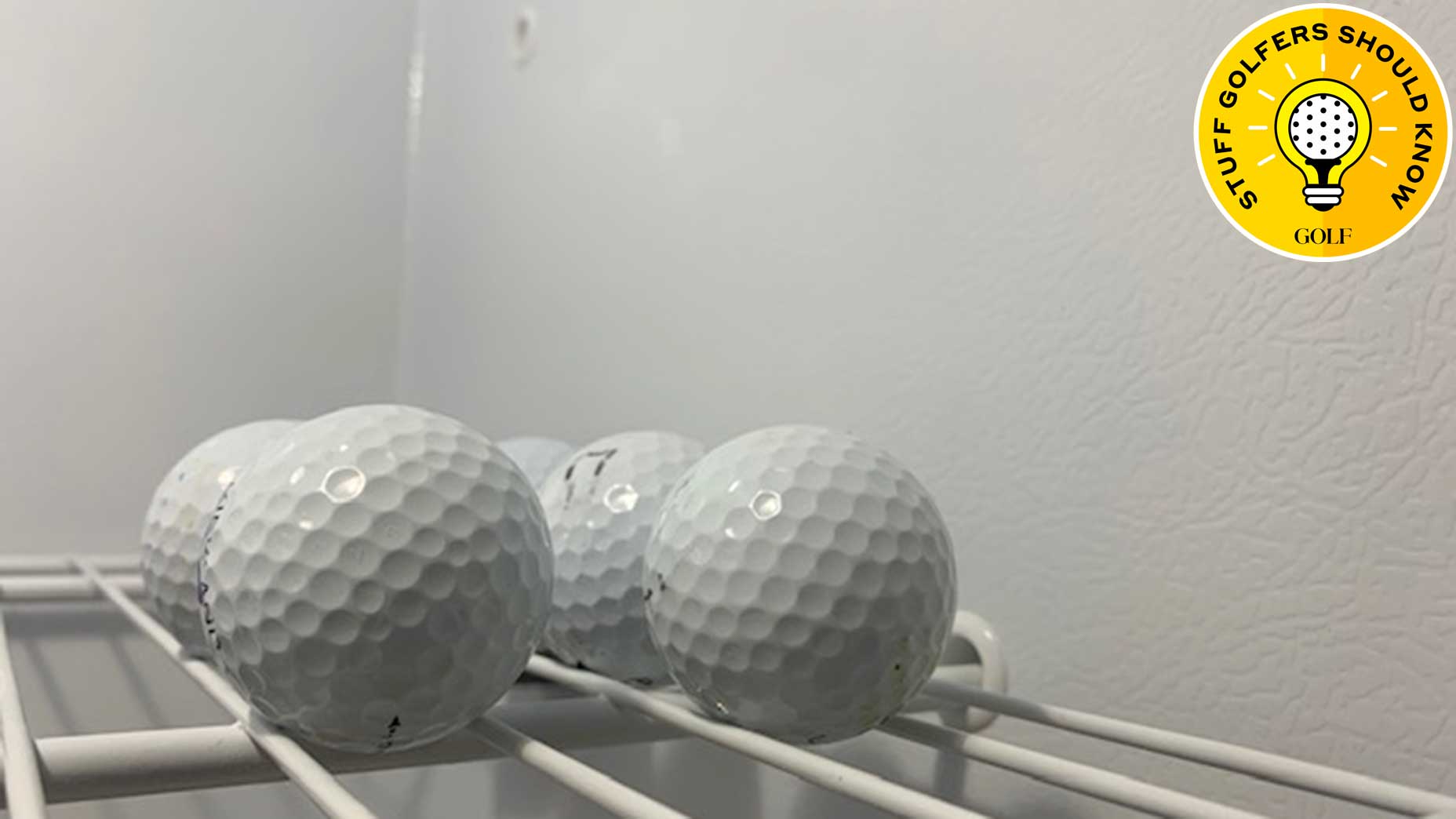Welcome to Stuff Golfers Should Know, a GOLF.com series in which we reveal all kinds of useful golf (and life!) wisdom that is sure to make you the smartest, savviest and most prepared player in your foursome.
***
Posing a question to the internet is like asking your Uber driver for a swing tip. It’s hard to know whether you can trust the answer.
Take, for instance, the responses we received when we plugged this query into Google: what’s the best way to store golf balls?
Various links led to varying responses.
Put ‘em in your drawer! Stash ‘em in your wardrobe! Keep ‘em in egg containers! Whatever you do, never, ever stick ‘em in your freezer!
Pretty soon, our heads were spinning. We figured it was better to ask real experts. Those experts were more helpful, but even they differed in some of their advice.
“Don’t do anything (to a golf ball) that you wouldn’t do to yourself,” a spokesperson for a leading golf-ball maker told us. “Basically, don’t lock them in your trunk. Don’t microwave them when they’re cold. Don’t freeze them and don’t leave them in your garage or attic.”
Protect them from humidity, he added, and avoid exposing them to wild swings in temperature. Bottom line: keep your golf balls dry and comfortable. Sounded simple.
And yet, some science suggests there is more to it than that.
When we put the storage question to the USGA, we got a response that fell partly in line with the insights above: protecting golf balls from moisture was important, we were told.
But temperature was another story. Based on USGA research, storing golf balls in the freezer was perfectly okay. Preferable, in fact.
“The best temperature for storing a golf ball is much, much colder than the best temperature for hitting a golf ball,” said Steve Quintavalla, the USGA’s senior director of equipment standards. Golf balls, he noted, decay over time because of chemical reactions that have mostly to do with atmospheric oxygen, and lower temperatures slow those reactions down.
“The colder you can get a golf ball, the less it will decay,” Quintavalla said.
Bottom line: keep them cold and dry. Hence, the frigid, airtight confines of a freezer.
To test this assertion, Quintavalla conducted an experiment for us. He pulled out a premium golf ball that had been in the freezer since 2009 (it’s the USGA; they do things like keeping golf balls where the rest of us keep our Birds Eye peas), brought it to room temperature and put it through a robot hitting session. Then he did the same with an identical premium ball that had been kept at room temperature for the same 14-year period.
The result? The ball stored at room temperature lost 1 percent of its original speed (2.6 feet per second), whereas the freezer-stored ball lost .4 percent of its original speed (1 foot per second). Translation: the freezer-stored ball performed slightly better. Though the difference was probably too small for the average golfer to notice, it was a difference nonetheless.
According to Quintavalla, there is probably a point where it gets too cold for golf balls. But those temperatures would have to be really frosty, below what is known as “glass transition” — where amorphous materials turn brittle, in the range of 90F below zero. Home freezers don’t get anywhere near that cold.
As for temperature swings, like most materials, golf balls do indeed expand and contract with heat and cold. But Quintavalla said he was unaware of any research showing why that would be bad for golf balls. The rubber core used in golf ball cores is used extensively in tires, he said. Surlyn, which makes up the mantles of some balls and the covers of others, is used in ski boots and on the soles of athletic shoes. Urethane, which is used in the covers of premium balls, is used in car bumpers and coatings.
“Clearly in the case of tires, ski boots and car bumpers, these materials can go from greater-than-room temperature to sub-freezing and back again over many cycles without becoming a problem,” Quintavalla said.
When it comes to temperature, he noted, heat is a bigger worry than cold, and he cautioned against storing golf balls in hot environments (upwards of 80 degrees and above) for two reasons. The first is that some materials can soften and deform permanently. The second is that the rubber will age slightly faster.
But cold and dry is okay, so don’t sweat the freezer, Quintavalla said. Just be sure to bring any freezer-stored golf balls back to room temperature before you put them into play. Storage is not the same as performance, and golf balls perform worse when they are cold.
Whether you want to store golf balls in the freezer is another matter. Any benefits will probably be too small for you to notice. And, unless you’re engaged in scientific research, storing golf balls in your freezer is an odd thing to do. People might begin to wonder about you.
All things considered, for the sake of your golf game and your reputation, it might be best to simply store your golf balls in a cool, dry place in your home, but not necessarily alongside the popsicles and the ice cubes. Quintavalla is cool with that, as is every expert we contacted.
In the meantime, always cook chicken to an internal temperature of 165F. Everyone agrees on that point, too.
